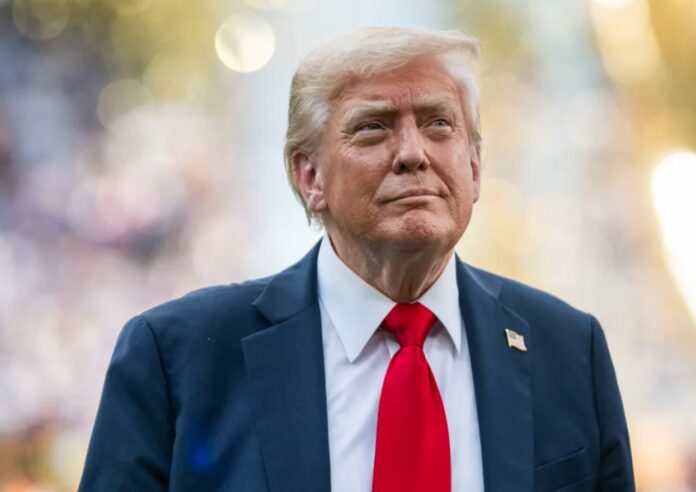President Donald Trump on Sunday unveiled a trade agreement with the European Union that will impose a 15% tariff on all imports from the 27-country bloc, a move he hailed as a win for American workers and the US economy.
Trump announced the deal following a meeting with European Commission President Ursula von der Leyen at his Turnberry golf resort in Scotland. The agreement comes after weeks of tough talk, with Trump threatening to set tariffs as high as 30% on European goods.
“It’s a good deal for everybody,” Trump said after the meeting.
As part of the agreement, the EU will also purchase $750 billion worth of American energy and invest $600 billion into the US economy, Trump said. Specifics of the investment plan were not yet available, but this could bode well for Alaska.
The North Slope holds an estimated 35 trillion cubic feet of recoverable natural gas, positioning the state as a key player in America’s energy future. The $44 billion Alaska LNG project aims to tap that potential by constructing an 800-mile pipeline from the North Slope to a proposed export terminal near Anchorage, with operations projected to begin around 2030 or 2031. The project aligns with the European Union’s $750 billion commitment to purchase US energy, particularly liquefied natural gas, as Europe continues to shift away from dependence on Russian gas supplies.
According to the Office of the US Trade Representative, total goods trade between the United States and the European Union was an estimated $975.9 billion in 2024. US goods exports to the EU totaled $370.2 billion, while imports reached $605.8 billion — resulting in a $235.6 billion trade deficit.
By comparison, total U.S. goods trade with Japan amounted to $227.9 billion in 2024.
The tariff deal is the largest trade achievement of Trump’s first year back in office. Last week, the president announced similar agreements with Indonesia and the Philippines, each involving a 19% tariff on imports. His deal with Japan has a 15% import tariff.
Since before he was elected, Trump has made tariffs a central feature of his economic platform, to help restore lost manufacturing jobs, shift the tax burden off of American families, and generate revenue to reduce the national debt. He has frequently criticized previous administrations for “one-sided” trade deals.
“We’ve had decades of bad deals — those days are over,” Trump said. “We’re rebuilding American industry, one negotiation at a time.”

Watching the stocks go up today. 🙂
We’re only raising the tax on Americans purchase certain goods from EU by 15%. They’ll pay it, just like Mexico paid for the wall. I’ll pay you Tuesday for a hamburger today.
The Trump meeting with the EU was basically set up to open a new Golf course in Scotland that cost us taxpayers close to $10,000,000 (10 million dollars) open up the link below. Don’t forget the 400 million dollars jet he got from Qatar, that’s going to cost us billions then at the end of his term the jet will be turned over to him personally.
Oh yes back to Trumps great negotiations with regard to Tariffs, let’s call it for what it is, TAXES on the taxpayers, that’s us.
‘https://apple.news/Al34PjjX3QEKlPmrmzjY3aw